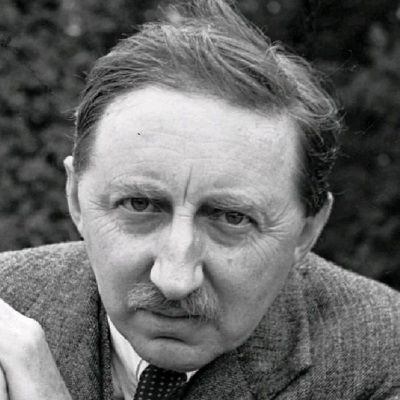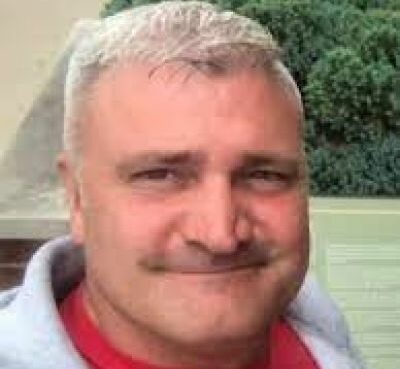E. M. Forster- Biography
Page Contents
Edward Morgan Forster was an English novelist, short story writer, essayist, and librettist who was widely regarded as one of the most gifted writers of his generation. He wrote some of the best novels of the twentieth century, many of which were well-plotted and sarcastic, with themes of class and hypocrisy in English society. He began writing when he was six years old. His primary lifelong interest was writing, and he used his time and experiences to greatly contribute to this pursuit.
The fact that he was nominated for the Nobel Prize in Literature 13 times attests to his genius. Forster traveled much and recounted these experiences in his stories. His homosexuality and romances were the subjects of his novel, ‘Maurice,’ which was published several years after he died. Among his best-known works are ‘A Room with a View,’ ‘Howards End,’ and ‘A Passage to India.’ He was a staunch opponent of book adaptations, believing that a film or stage performance did not do a literary work credit. Despite this, several of his novels have been made into immensely successful films, preserving his legacy.
E. M. Forster- Birth, Age, Ethnicity, Siblings, Education
E. M. Forster was born on January 1, 1879, in Middlesex, England, to Alice Clara “Lily” Forster and Edward Morgan Llewellyn Forster. Officially known as Henry Morgan Forster, he was given the name Edward by mistake during his baptism. His father, an architect, died of TB before Forster was two years old. Marianne Thornton, his paternal great-aunt, reared him after that. He is the great-great-grandson of abolitionist Henry Thornton through her.
When Marianne Thornton died in 1887, Forster inherited £8000. This sum was plenty for him to live on and pursue his dream of becoming a writer. He enrolled as a day student at Tonbridge School in Kent. This period would subsequently serve as the foundation for many of his criticisms of the English public school system.
At King’s College, Cambridge, he studied history, philosophy, and literature. He appreciated the intellectual depth available here, and he developed a sense of distinctiveness and a healthy skepticism that was a far cry from his earlier years.
During his time at King’s, he was an active member of organizations such as the Cambridge Conversazione Society, also known as the Cambridge Apostles. He joined the Bloomsbury Group as a founding member. After college, he used his fortune to travel to Europe, Egypt, Germany, and India with his mother, Goldsworthy Lowes Dickinson, a classical author.
E. M. Forster- Professional Career
E. M. Forster gained insight into family tensions as a result of being up in two diametrically opposed families. This, together with his experiences at Tonbridge, served as the foundation for his early works, which depicted the battle to be free of Victorianism.
‘Where Angels Fear to Tread’ was his first novel (1905). It was during a conversation with his audience that he advised them to maintain contact with the Earth and build their imagination. The same subject runs through ‘The Longest Journey’ (1907) and ‘Howards End’ (1910).
His first trip to India was in 1912, while he was working on ‘Maurice.’ The work was officially published a year after his death, in 1971. This was done at his request due to the novel’s obviously homosexual subject.
As a conscientious objector, he volunteered for the “International Red Cross” and served for three years in Alexandria, Egypt. His observations in Alexandria influenced the books Alexandria: A History and Guide’ (1922) and ‘Pharos and Pharillon: A Novelist’s Sketchbook of Alexandria Through the Ages’ (1923). (1923). During this time, he published a number of short pieces in local newspapers under the pen name ‘Pharos.’
When he returned to India for the second time in the early 1920s, the country was in the midst of a revolution. He was appointed as the private secretary to Maharajah of Dewas “Tukojirao III.” ‘The Hill of Devi’ is a non-fiction account of this time period (published in 1953).
‘A Passage to India,’ his most recent novel, was also his most profitable (1924). It delves into the British colonial occupation of India. Rather than depicting a confrontation between the two countries, the novel focused on the relationship between the two heroes.
Though he stopped writing novels after ‘A Passage to India,’ he continued to create short tales till the end of his life. Several of his anthologies were published, including ‘The Eternal Moment,’ a collection of short stories (1928).
During the war, he became a BBC radio broadcaster in the 1930s and 1940s and delivered a weekly book review.
His honorary scholarship at Cambridge permitted him to reside and study there. E. M. Forster gave a few lectures here and there and grew to be a well-liked figure on campus.
Major Projects
His most optimistic work was ‘A Room with a View’ (1908). The novel, set in Edwardian England, is a social satire of English society. It is ranked 79th on Modern Library’s list of the “100 finest English-language novels of the twentieth century.”
‘Howards End’ was his masterwork (1910). Many issues are explored in the work, including social traditions in England, codes of behavior, and personal relationships. The epigraph describes his desire for understanding and sympathy. It is ranked 38th on Modern Library’s list of the “100 finest English-language novels of the twentieth century.”
‘A Passage to India,’ based on his experiences in India, was perhaps his most famous work. With the backdrop of the British Raj and the Indian Independence Movement, this novel was named to ‘Time Magazine’s ‘All-Time 100 Novels’ list.
Achievements & Awards
- In 1937, E. M. Forster was given the “Benson Medal” for his weekly book evaluations while working at the BBC.
- Tonbridge School, his alma mater, has named a theater in his honor. In 1946, he was elected as an honorary ‘Fellow’ of King’s College.
- In 1953, he received the ‘Order of Companions of Honor,’ and in 1969, he received the ‘Queen Elizabeth’s Order of Merit.’
Personal History and Legacy
- Many people were unaware of Forster’s homosexuality at the time. He told a few close friends about it, but not the general public. As a result, he lived his entire life as a bachelor.
- Throughout his life, he was involved with a number of guys. He fell in love with Mohammed el Adl, a tram conductor, in Alexandria. He had a brief affair with Bloomsbury group member Harry Daley. Arthur, a bus driver, was the object of his love until his wife discovered the affair and ended the relationship.
- Forster met 28-year-old Bob Buckingham at a party hosted by JR Ackerley when he was 51. Buckingham was a married police officer at the time. They had a lengthy and devoted relationship that included a hidden home life at Forster’s Brunswick Square apartment.
- E. M. Forster was Robin Morgan’s godfather, the son of Bob Buckingham, and his wife, May Hockey. Robin died of Hodgkin’s lymphoma in 1962.
- During the mid-1960s, he suffered from strokes that severely damaged him. At the time, his nursemaid was May Hockey. On June 7, 1970, this great literary genius died as a result of a stroke.
Trivia
- E. M. Forster was nominated for the Nobel Prize in Literature 13 times, but he never won.
- He turned down a ‘Knighthood’ from the British honors system in 1949.
- In 1960, he gave the manuscript for “A Passage to India.” Rupert Hart-Davis was the recipient, and the £6500 earned was donated to the London Library.
Also Read, Concetta Monti, Chani Natasha, and Peachprc.




